by Ocean Robbins: When someone tells you to “eat your peas,” they’re saying that you have to do something unpleasant in the short term to achieve an important long-term result…
And indeed, many people have decidedly un-fond memories of being made to eat their peas during childhood. The words “mushy” and “yucky” often accompany these memories, as do images of the round little green vegetables coming out of a can, and then being pushed around the plate in a desperate attempt at procrastination, or fed to Fido under the table in a more assertive approach to pea-avoidance.
That’s a pity, though, because peas can be awesome. Sure, you can overcook them and serve them as a sad little side dish (apologies to British people who consider “mushy peas” a delicacy). But peas can be a delicious addition to your diet, as I will attempt to prove in this article. And today, these little legumes are enjoying a well-deserved renaissance.
That renaissance has come about in part because the plant-based food industry has discovered that pea protein can be a key ingredient in highly convincing vegan meat and dairy alternatives. The pea protein market itself may expand by 42% this year, reaching a worth of almost a billion dollars. The evidence is clear that people are finally heeding the words of John Lennon by giving peas a chance. (Ok, maybe he sang it a little differently.) So what’s the deal with peas? Are they good for you? And is pea protein healthy?
What Are Peas?
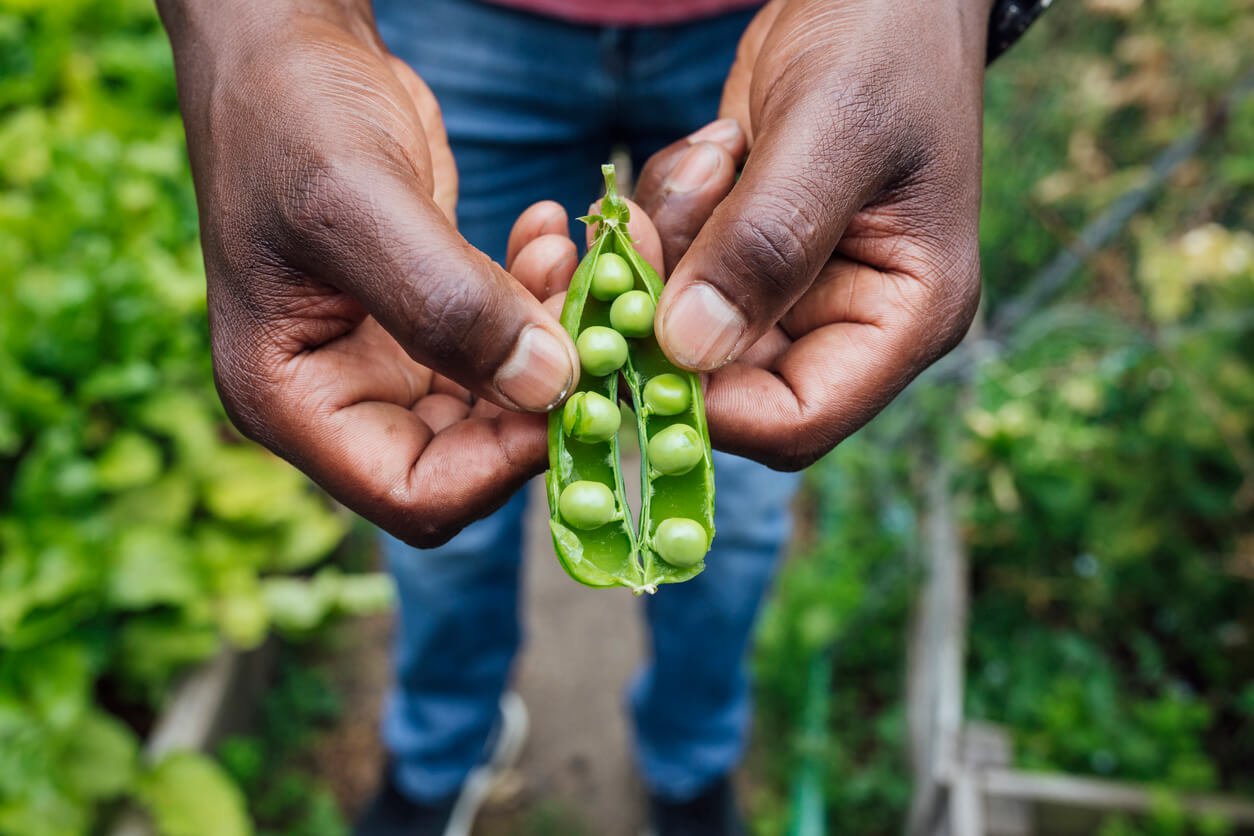
Peas, also known as Pisum sativum, are part of the legume family, which also includes beans and lentils. If you’ve ever had the opportunity to pick peas from an annual pea plant, you know that they’re actually seeds wrapped in pea pods. Like green beans, eating peas as a vegetable — typically served as a side dish — is common. They’re one of the oldest domesticated crops, and an important crop worldwide.
The pea species originated in Southwestern Asia, in what is now Afghanistan, India, and Pakistan, before it spread to subtropical and tropical regions around the world. Now, pea plants can grow almost anywhere. They tend to thrive in temperatures between 55-65°F, and no hotter than 85°F.
Types of Pea Plants

There are only a few main types of pea plants that you may have had the pleasure of trying.
Sweet Peas
Also called garden peas or English peas, sweet peas have inedible pods that contain the peas themselves. Popular varieties include Green Arrow and Wando peas. Those bags in the frozen veggie aisle at the supermarket contain the sweet pea variety.
The baby in the Popeye cartoon (whose actual name was Scooner Seawell Georgia Washenting Christiffer Columbia Daniel Boom) was nicknamed Swee’Pea as a term of endearment, proving that spinach wasn’t the only veggie on the feisty sailor’s mind.
Green or Yellow Field Peas
These are technically from the same plant as sweet peas, but they’re grown to maturity and dried to make split peas. Field peas are used more like lentils, as in a hearty and delicious split pea soup. Many food companies also use them to make pea protein products, like protein powders and pea milk.
Snow Peas
This type of pea produces edible, flat, and relatively stringless pods with smaller peas inside. Common varieties of snow peas include Mammoth Melting Sugar, Avalanche, and Snowbird.
Snow peas are more common in Asian cooking. I enjoy adding them whole to stir-fries with organic tempeh and other veggies like broccoli and bell peppers.
Snap Peas
These are great snacking peas. They produce large peas encased in a thick pod that you can also eat. Snap peas are crispy and often sold in snack bags and sometimes used in Asian cooking as well. Common varieties are Sugar Ann, Sugar Snap, and Cascadia.
Peas Nutrition

Peas contain loads of nutrition. They’re high in protein and fiber, providing eight grams of each in a one-cup serving. They also offer a well-balanced amino acid profile. While there are fewer sources of the amino acid lysine on a plant-based diet, peas are an excellent source of it.
They’re also high in an array of micronutrients. For example, peas are rich in copper, manganese, and phosphorus, as well as in B vitamins and in vitamins A, K1, and C. In fact, a single one-cup serving of peas provides 97% of your daily value for vitamin C.
Plus, you’ll find some potent phytochemicals in peas, each of which offers important health benefits. These include:
- Carotenoids, including alpha-carotene, beta-carotene, and lutein, which are especially good for your eyes.
- Phenolic compounds and flavonoids that offer anti-inflammatory, anticancer, and immune-boosting properties.
- Plus, other phytochemicals found in green peas that support healthy blood sugar and a healthy inflammatory response. These include pisumsaponins I and II and pisomosides A and B, which also make excellent tongue twisters.
5 Health Benefits of Peas
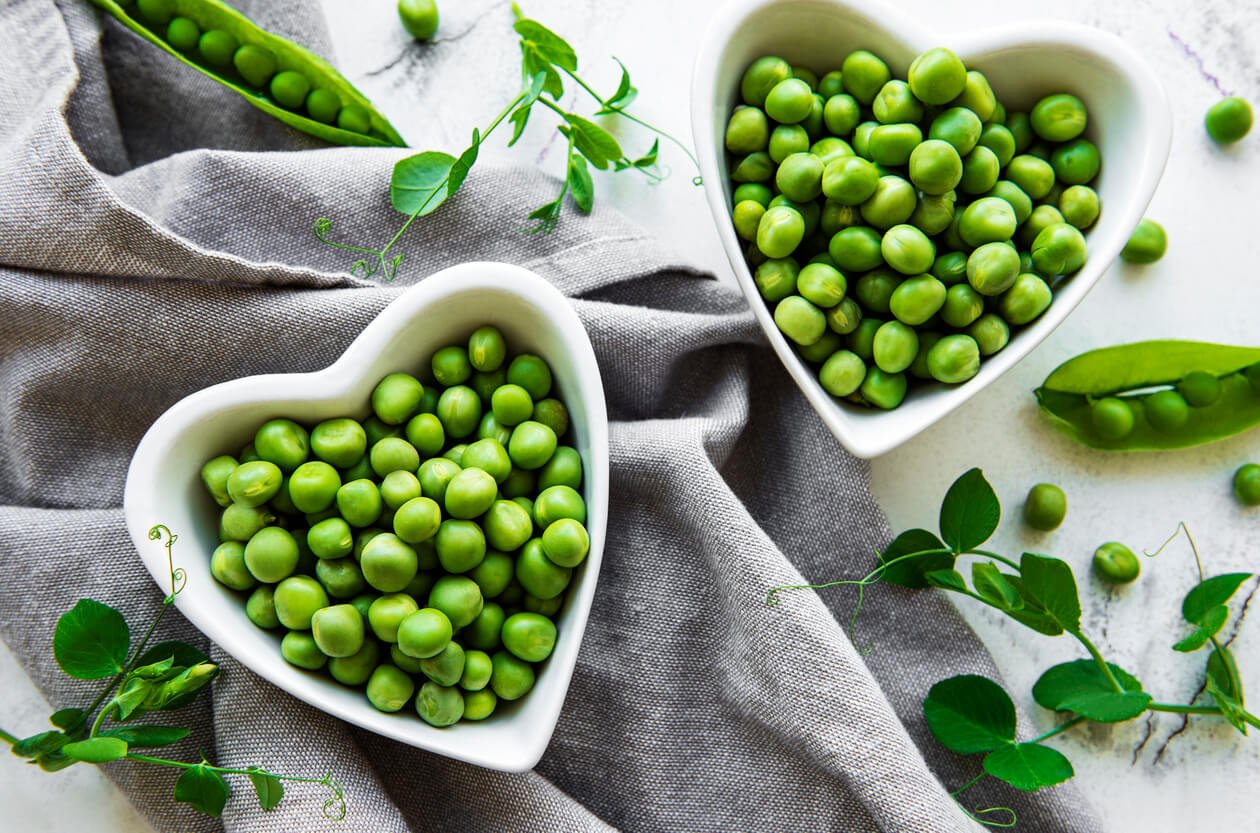
With their impressive nutritional profile, it’s not really surprising that peas can offer a number of health benefits. Here are a few.
1. May offer anticancer properties
Peas are high in fiber and plant-based protein, both of which may contribute to a reduced risk of cancer. They also contain a variety of micronutrients and phytochemicals with anticancer activity. Some of the most potent compounds found in peas include lectins (a so-called “anti-nutrient” that has anticancer properties), antioxidants, tumor-inhibiting isoflavones, and saponins, which may help trigger cancer cell death.
2. May have heart-protective benefits
Research shows that just one serving of legumes, like peas, per day, can significantly reduce LDL cholesterol levels. One study found that just a 5% reduction in LDL cholesterol can result in a 5% reduction in overall heart disease risk.
3. May support a healthy gut
Peas are especially rich in soluble fiber, which breaks down bacteria in your gut. This not only aids your digestion, but promotes a rich microbiome full of healthy gut bacteria, which can reduce your risk for a number of chronic diseases. Peas also contain pea proteins that can become glycated (for all you aspiring chemists out there, this involves the “non-enzymatic glycosylation reaction of proteins”). And glycated pea proteins have been found to help increase lactobacilli and bifidobacteria bacteria in the intestinal tract, which help improve gut health.
4. May provide muscle-building benefits
Pea protein is a high-quality plant-based protein, which may help to build muscle mass. One study assessed 161 men aged 18-35 years old who engaged in 12 weeks of upper body resistance training and either took 25 grams of pea protein, whey protein, or a placebo twice per day. The researchers found that along with the strength training, pea protein resulted in a greater increase in muscle thickness compared to the placebo group. There were no observed differences in the results of taking pea protein versus whey protein. Maybe Popeye should have been popping peas as well as cans of spinach!
5. May help support healthy blood sugar control
Regularly eating legumes like peas can be helpful for keeping blood sugar levels steady, largely because of their fiber content. In a 2020 meta-analysis including 18 randomized controlled trials, researchers found that studies involving people with type 2 diabetes reported significant benefits from eating legumes for fasting blood sugar and insulin, hemoglobin A1c (an indicator of long-term blood sugar management), and blood sugar levels two hours following a meal.
Considerations to Eating Peas
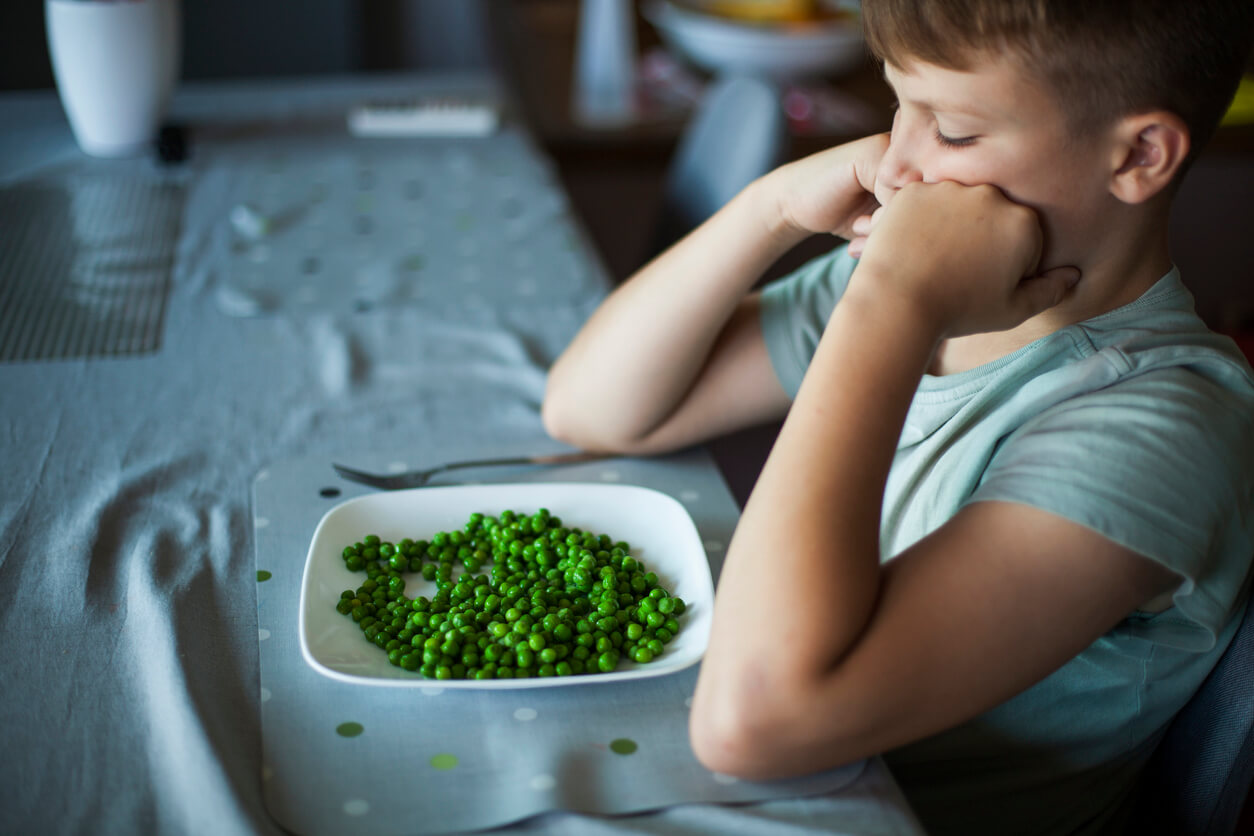
Despite the numerous reasons to consider adding more peas to your diet, some people may find that they also have a few potential downsides.
Ease into the fiber
First, peas are high in fiber, containing around eight grams in a one-cup serving. If you’re not used to eating a high-fiber diet, especially in one sitting, this may cause some digestive discomfort. Your body will adapt to increased fiber intake over time, but you can help the process by increasing your fiber intake slowly, and making sure to drink plenty of water to help keep things moving along.
Contain anti-nutrients
Peas are also a source of compounds like phytates that are sometimes referred to as anti-nutrients because they can bind to minerals like calcium, iron, magnesium, and zinc, making these minerals less available for your body. But it turns out that phytates also offer a number of health benefits. For instance, they may have anticancer properties, help bind toxic heavy metals, have antioxidant benefits, and even protect against kidney stone formation.
Phytates are found in all pea varieties, but are highest in processed pea protein and fibers. They also accumulate as seeds mature on the plant, meaning that immature garden peas have a lower phytate concentration than mature split peas.
If you’re at all concerned about the phytate and anti-nutrient content of peas, you can reduce the amount by cooking or soaking them. One study found that cooking reduced phytates in split peas by 13% while soaking until they germinated decreased phytates by a whopping 75%.
Peas also contain another anti-nutrient compound called lectins. Like phytates, these are less concentrated in immature peas. But again, they’re not the enemy that some people fear. And like phytates, lectins also offer health benefits in a balanced diet, including having the potential to help prevent or even treat digestive cancers. Lectins are in some of the healthiest foods on the planet, which we know are linked to lower risk for chronic diseases like heart disease, cancer, type 2 diabetes, and Alzheimer’s.
If you’re cooking peas to reduce phytate content, you’ll also remove some lectins. Fermenting fresh pea pod varieties like snow peas, or sprouting split peas, can also help reduce lectins and phytates. Interestingly, fermented pea protein powder, available commercially, is designed to provide the benefits of pea protein while also enhancing the bioavailability of the minerals that anti-nutrients normally inhibit.
Pea allergies
Peas are mostly a hypoallergenic food, but there are rare cases of pea allergies. The increase in the usage of peas and pea protein has subsequently led to an increased incidence of allergy concerns and reactions among consumers. People who are allergic to other legumes like peanuts, may need to exercise caution with peas. Furthermore, some people may find that they’re allergic to cooked peas but not raw, fresh ones that they can pick off the vine.
Grown with pesticides
According to 2021 research by the Environmental Working Group (EWG), peas a moderately contaminated produce item when it comes to agricultural chemical residues. Out of the 46 types of produce tested, snap peas are #23 on the list of most contaminated with pesticides. According to data from the USDA Pesticide Data Program, there are 78 potential pesticides used on pea crops. Many of these include neurotoxins, endocrine disruptors, developmental toxins, and carcinogens.
To minimize your risk of ingesting pesticides from fresh peas, buy organic ones when possible. Regardless, it’s also good practice to wash peas thoroughly before eating them. Even better, consider growing snap or snow peas (the ones with the edible pods), as they make great cool weather crops. Many people like to plant them in spring, soon after the last frost of the season. Frozen sweet peas are another option. These are actually included in the EWG’s Clean 15 list, largely because they’ve had the pods (which absorb much of the pesticides) removed.
Are Peas Sustainable?
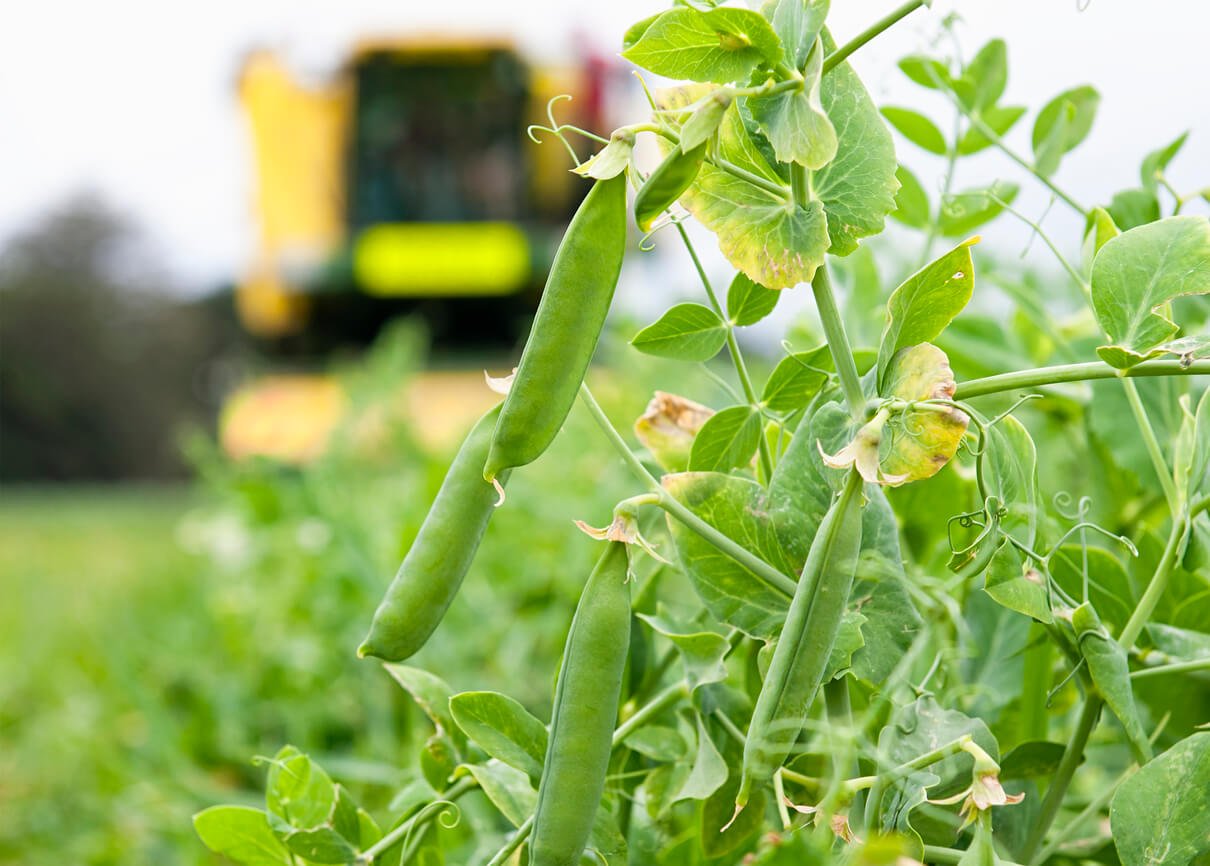
Peas are healthy and offer many benefits, but you may be wondering how they impact the environment. The good news is that peas are one of the best crops when it comes to natural resource usage. Field peas require less water and are tolerant to drought.
They require a lot less energy than wheat to produce, and they yield more food. Peas are also more water-efficient than animal-derived sources of protein. For instance, some estimates have found that it takes 3,200 liters of water to make one kilo of pea protein compared to around 5,900 liters for soy or around 588,000 liters for beef.
Peas, like all legumes, are considered “nitrogen fixers,” meaning that they take nitrogen gas from the air and store it in their roots, which makes the soil more fertile for future crops. This characteristic also makes them an ideal candidate for crop rotation. Another plus: no GMO pea varieties exist outside of a lab setting.
Types of Pea Products
Once you start paying attention, you’ll see peas all over a typical grocery store or supermarket.
Whole peas
Depending on the season, you might find fresh peas and pea pods — in the form of snap and snow pea varieties — in the produce section. Frozen peas are a staple of the frozen veggies aisle, while canned peas and pea soups occupy shelf space with other canned veggie products.
Dried and dehydrated peas
Dried split peas reside near other bags of dried beans and lentils. And peas are also dehydrated and sold as crunchy snacks in a variety of flavors, like tomato basil, wasabi, and even in the form of pea chips.
Pea protein
Pea protein has also become a significant ingredient in many plant-based meat and dairy alternatives. For example, Beyond Meat uses peas as the primary protein source in their line of burgers and other vegan meat alternatives.
Pea protein isolate
There’s also pea protein isolate, which contains around 80% protein. This is an isolated form of protein from peas that’s highly concentrated. Things like protein powders, snack bars, and other packaged and processed convenience foods and sports nutrition products use isolates.
Pea starch
Pea starch is another pea-derived ingredient. This is a concentrate with an approximately 12% protein content, offering good gelling properties and freezer stability.
Peas are a solid protein choice
While ingredients like pea protein and pea starch provide protein and stability properties for certain products, they don’t provide all the same nutritional benefits as split, frozen, or fresh peas eaten as whole foods. However, pea protein powder does tend to have a better amino acid balance compared to other plant-based protein powders like soy.
The bottom line on pea protein: Whole foods are usually best, but if you’re looking for a good source of plant-based protein that has a decent amino acid profile and a light environmental impact, peas seem like a solid place to source it from.
Cooking and Preparing Peas
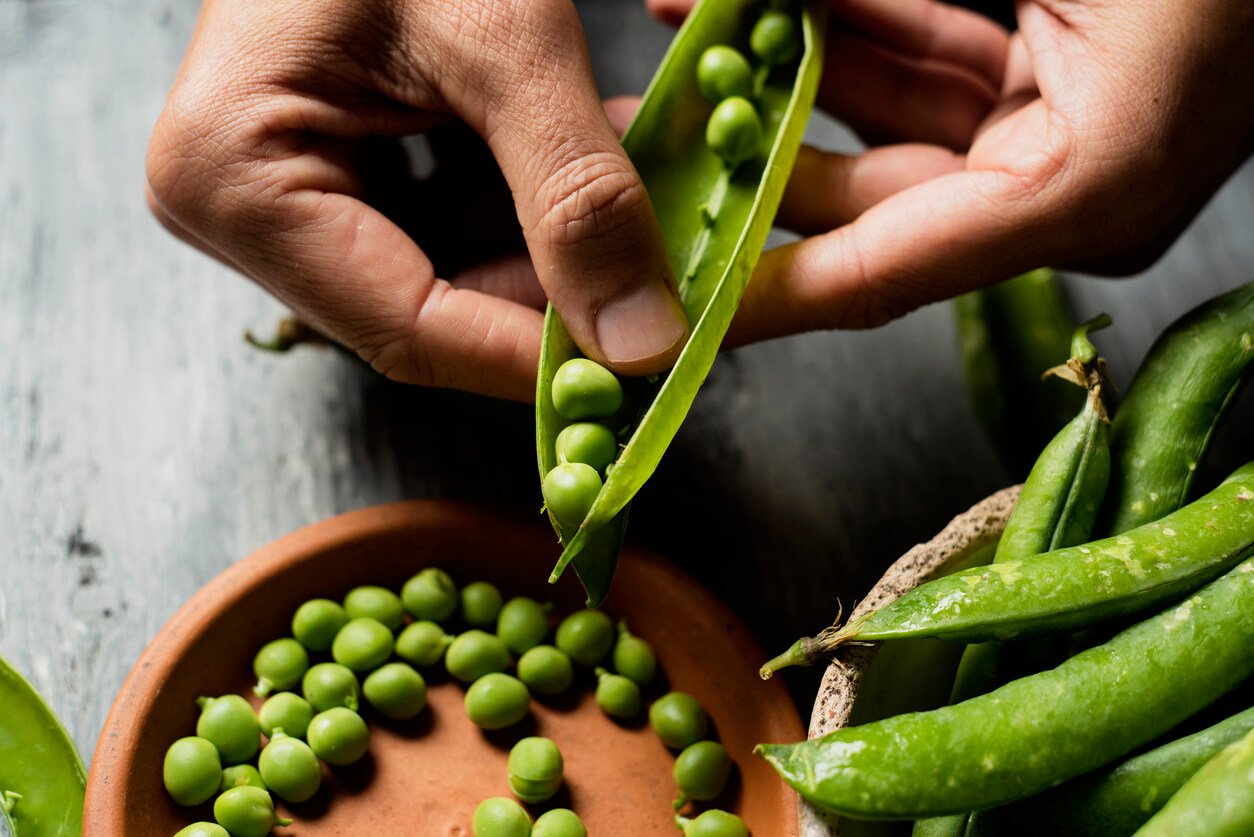
There are so many ways to enjoy peas; you’ll marvel that they were once regarded as boring old vegetables.
Starting simply, you can cook and eat them as a side dish or a component of an entree. If you boil fresh or frozen peas, this can actually increase their beta-carotene content. You can also boil split peas or dried peas. Just soak them overnight to soften and boil for about 20 minutes, similar to how you would cook and prepare lentils.
Alternatively, you can steam peas, which preserves more of their natural vitamin C content than boiling peas. You might enjoy sauteed peas cooked on the stove in a small amount of water or broth. And frozen peas can also be cooked in a microwave.
You can sprout dried peas, too, by following a few simple steps. The whole process takes just a few days and requires very little in the way of space or equipment, so you can have crunchy pea sprouts in your salads and on top of soups and entrees on a regular basis.
You might also enjoy growing pea shoots, which you can use in salads or eat similarly to spinach, either raw or cooked. Pea shoots are great for growing in small spaces and in areas where you don’t get a lot of sunlight.
However you decide to prepare your peas, here are some ideas for how to use them:
- In split pea soups, stews, and Indian dahls
- To make dips like hummus or another savory recipe
- As a side dish on their own, mixed with other veggies, or mashed into mushy peas
- In stir-fries and other cooked Asian-style dishes
- As part of savory pies like shepherd’s pie or hand pies
- In casseroles
- With pasta dishes, like macaroni and cheese, fettuccine, or spaghetti
- In homemade veggie burger patties
- In salads, particularly using sweet peas
- As a snack on their own!
Fabulous Pea Recipes
Below you have three fun recipe options to try a variety of peas. Green Pea Hummus is a unique take on traditional hummus, made with — you guessed it — sweet peas! Creamy Split Pea Soup is an easy-to-prepare, one-pot recipe that the whole family will love. And finally, whip up a meal in minutes with the Ginger Stir-Fry Snow Peas and Carrots. We hope you enjoy experimenting with all three!
1. Green Pea Hummus
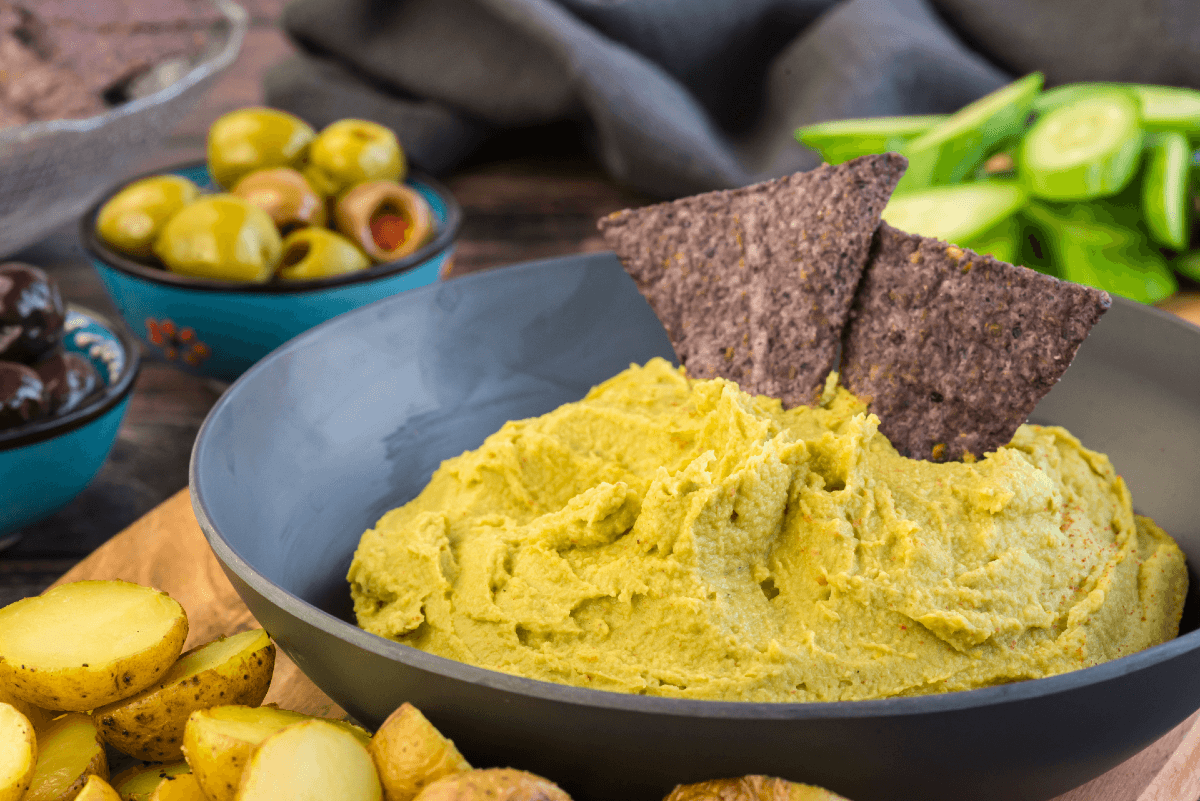
Shake up your hummus routine with this fresh twist — a homemade version that includes peas. Rich in protein, fiber, and B vitamins, peas not only add texture and flavor to hummus, but also plenty of nutrition!
2. Creamy Split Pea Soup
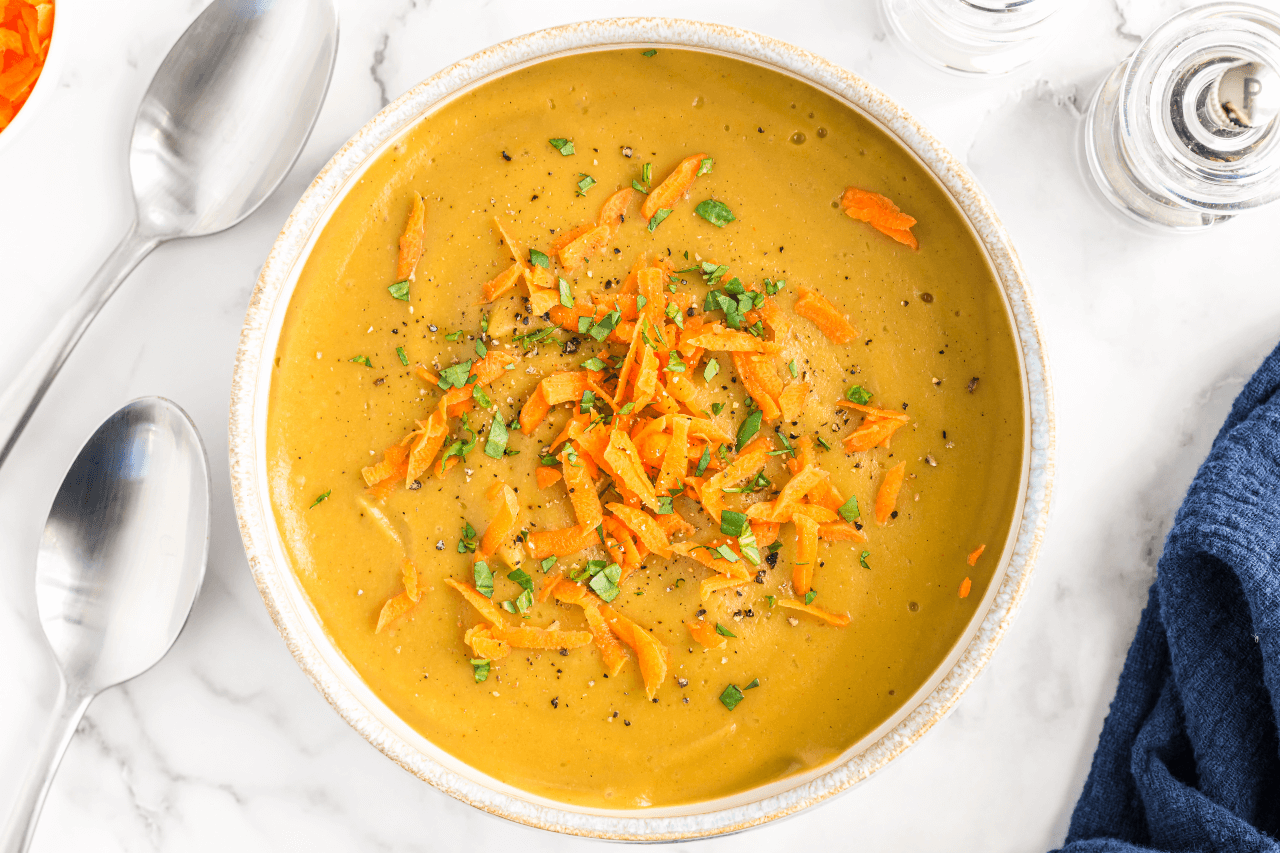
Split peas are different from other types of legumes in that you don’t need to soak them before cooking, making their preparation simple and straightforward. The ingredients may be minimal, but don’t let that fool you — this soup is packed with nutrition like fiber, protein, folate, and iron, not to mention oh so satisfying flavor.
3. Ginger Stir-Fry Snow Peas and Carrots
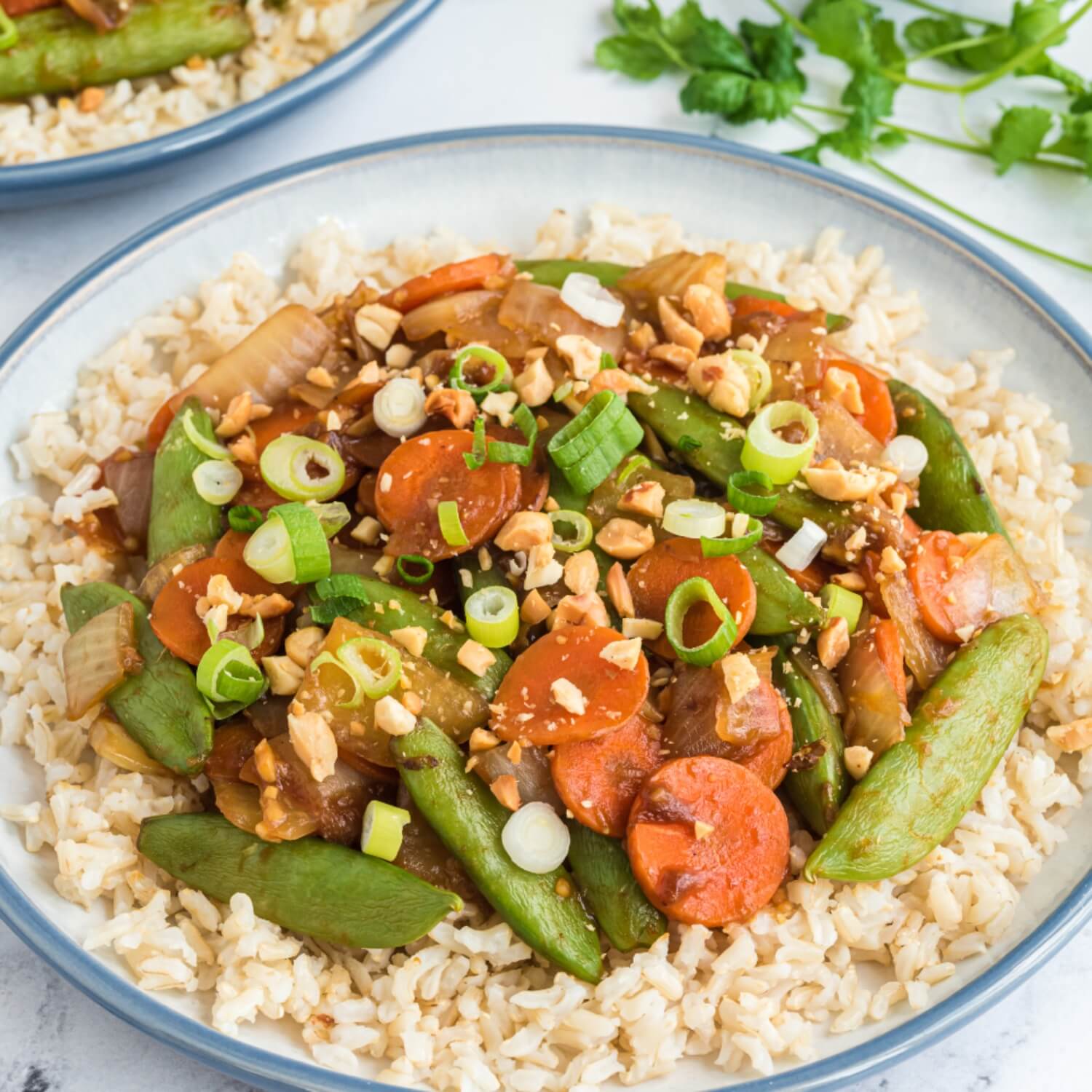
This nutritious and easy stir-fry comes together in minutes. It’s flavorful and satisfying yet light and refreshing. Serve it with organic brown rice or your favorite grain, such as farro or quinoa. If you love your snap peas with a little more crunch, add them toward the end of cooking.
Eat Your Peas, Indeed
Peas are an incredibly versatile and nutritious food with many health benefits and uses. While they’ve been around for a long time, more recently, their function as a plant-based protein source has contributed to the rise in plant-based meat and dairy products. Plus, they’re one of the most sustainable and even regenerative crops, with very few downsides. Overall, peas are safe and healthy for most people and can be a valuable part of a balanced diet.
















































